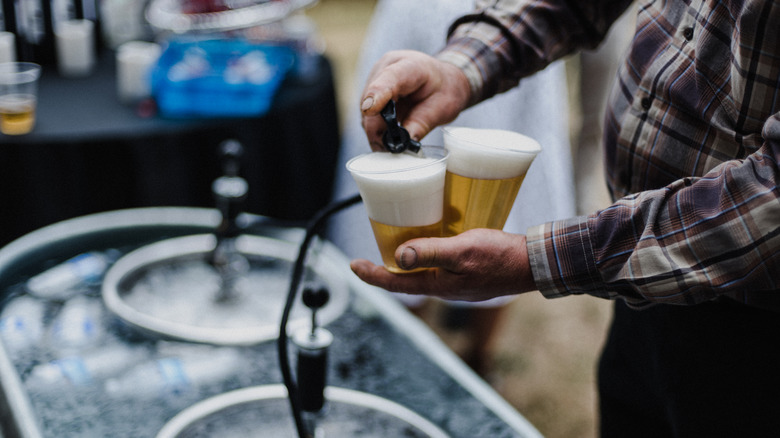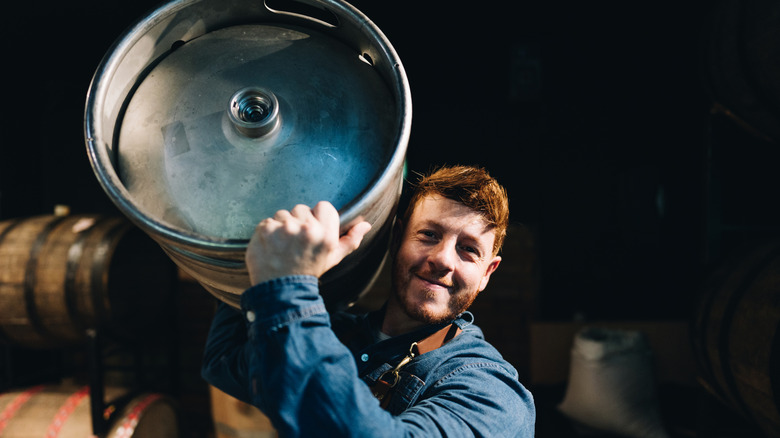How Long Is A Keg Good For Once It's Tapped?
Summer is suited for a cool Corona by the pool, but fall is keg season. Cooler weather brings legendary tailgates and Oktoberfest celebrations. It's all good fun — until your eyes are bigger than your alcohol tolerance. If you're left with a half-full keg, will you have to pour good beer (and good money) down the drain?
It depends. If you used a hand-held party pump, you're out of luck. They introduce oxygen to the keg, which affects both flavor and carbonation. A keg that's tapped with a party pump will last 24 hours, max. If you're using a CO2-based system, though, your keg will last longer. Pasteurized draft beer lasts up to 120 days, but in America, domestically brewed kegged beer is rarely pasteurized. Realistically, your keg may only last for 45-60 days — and that's from the date it's kegged, not when you buy it. The type of beer matters, too. Pilsners and IPAs should be finished off quickly, but lagers and wheat beers will last longer. Stouts and porters can also stick around, but clumps of sediment can form in old stouts.
Even clumpy beer is safe to drink, though. The USDA doesn't provide guidelines for beer, but Neil Witte, one of the world's foremost beer experts, told Eating Well that old beer won't hurt you. "Because of the alcohol content in beer, and the presence of hops — which have antimicrobial characteristics — there's not really any pathogen growth," Witte explained.
How to keep a keg fresh
Even before you tap the keg, do your best to keep it cool. Beer — especially unpasteurized beer — spoils quickly at warm temperatures. While a pasteurized keg will do okay at room temperature, unpasteurized beer should be stored between 38 and 55 degrees Fahrenheit. Beer freezes at around 28 degrees Fahrenheit, while higher temperatures can cause bacterial growth. As with storing opened bottles of beer, keeping your keg in a refrigerator is ideal, but most people don't have the fridge space. Keep your keg in a cool cellar, or consider buying a storage system, like a kegerator.
Kegerators, along with jockey boxes, work as CO2 systems, too. CO2 systems are the key to keeping a tapped keg fresh, but they're pricey. A decent system will set you back a few hundred dollars at least, but kegs don't come cheap, either. Are you to figure out how to host legendary tailgates on a regular basis without wasting money on half-finished kegs? A $300 CO2 system will pay for itself pretty fast. But if you're not willing to make the investment or risk running out of booze, look into CO2 system rentals or buy several small kegs instead of one big one. And, even if you're stuck with slightly stale beer, you can always use leftovers for beer bread or other beer-based recipes.

